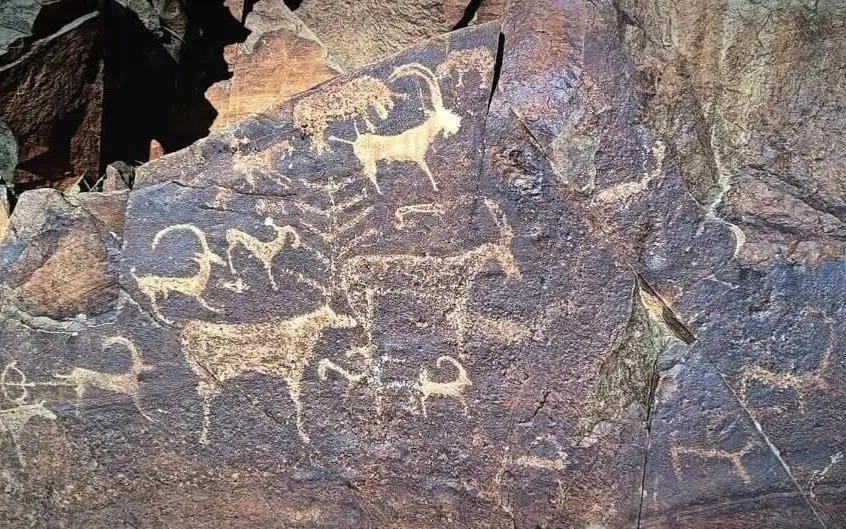Ancient Rock Art and Its Cultural Significance
Kazakhstan is home to around 300 petroglyph clusters—sacred sites where ancient communities worshipped deities and honored their ancestors. According to Olga Gumirova, founder of the Hunters for Petroglyphs public foundation, these rock carvings hold deep spiritual and historical importance. Her organization is committed to discovering, studying, documenting, and protecting this invaluable rock art from destruction.
Unveiling Kazakhstan’s Hidden Treasures
Despite their significance, many of Kazakhstan’s petroglyph sites remain unexplored. In an interview with Kazinform, Gumirova shared insights into recent archaeological expeditions and the rich cultural narratives embedded within these ancient carvings.
Guardians of History: The Role of Hunters for Petroglyphs
The Hunters for Petroglyphs foundation consists of scientific volunteers, historians, photographers, writers, activists, and journalists. It operates in collaboration with the Margulan Institute of Archaeology, balancing independent exploration with licensed, specialist-led research.
As winter pauses field expeditions, the foundation focuses on analyzing collected data, preparing reports, and developing new projects. Educational initiatives include lectures on Kazakhstan’s history and archaeology, particularly highlighting petroglyphs. Plans are also underway to create guided excursions and establish tourist routes within the Arkalan Petroglyph National Park.
A Landmark Discovery: The Ordakul Petroglyph Cluster
One of the most remarkable discoveries occurred in the Daulybai Mountains near Taldykorgan, at a site called Ordakul. Researchers expected to find intriguing carvings but instead uncovered a major scientific breakthrough. Experts estimate that Ordakul holds approximately 25,000 petroglyphs, making it one of Eurasia’s largest known collections.
“These carvings tell the story of nomadic life in the Zhetysu region. We believe this area should be designated as a national park to attract visitors and showcase our nomadic heritage,” Gumirova stated.
Kazakhstan’s Rich Petroglyph Legacy
Petroglyphs are scattered across nearly every region of Kazakhstan, but remote locations and limited funding hinder exploration. Nonetheless, discoveries made in recent years have reinforced the nation’s reputation as a treasure trove of rock art.
The highest concentrations of petroglyphs are found in the Turkistan, Zhambyl, Almaty, and Zhetysu regions. Taldykorgan, in particular, stands out as a hub of petroglyph heritage, with several major sites nearby ranking among the five largest in Eurasia. Notable locations include Eshkiolmes and the newly discovered Ordakul, alongside Alabasy and Bayan Zhurek near Kapal.
“We’ve also identified additional clusters still awaiting thorough investigation, with initial estimates suggesting they contain around 10,000 petroglyphs,” Gumirova noted.
Preserving Kazakhstan’s Cultural Legacy
Just as Egypt is known for its pyramids and Greece for its temples, Kazakhstan’s petroglyphs stand as its own distinctive cultural landmarks. Some carvings date back over 4,000 years, illustrating the region’s long history of human civilization.
“The local population has always revered these sites, and traditions have persisted across generations. For instance, 19th- and 20th-century hunters added images of rifles to earlier Bronze Age carvings, seamlessly blending different historical periods into a single visual narrative,” Gumirova explained.
Safeguarding Rock Art for Future Generations
Gumirova emphasized the urgent need to protect these invaluable artifacts from vandalism. She advocates for the establishment of archaeological parks with proper security measures.
“These parks should be a mix of state-run and privately managed initiatives. Local residents, such as herders and their families, could help oversee and protect the monuments,” she suggested.
Petroglyphs serve as visual records of Kazakhstan’s past, preserving the stories of its ancestors for future generations. By safeguarding these ancient carvings, the nation ensures that its rich nomadic heritage remains accessible for both researchers and visitors alike.







